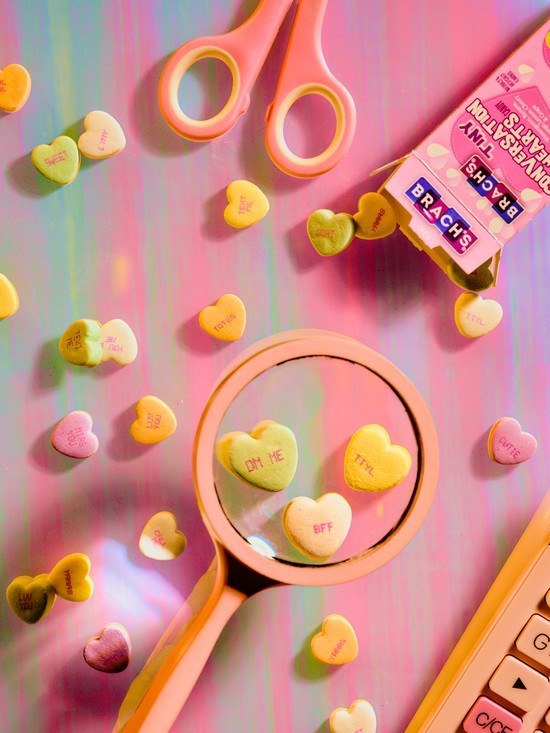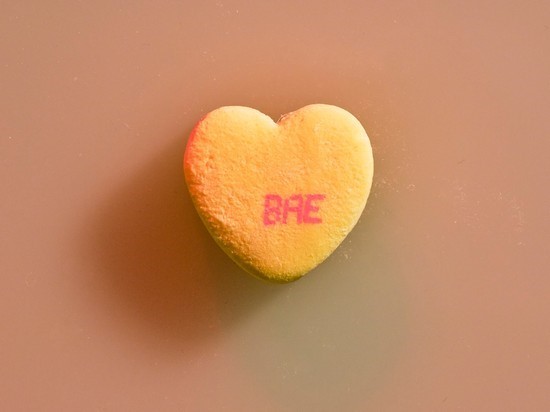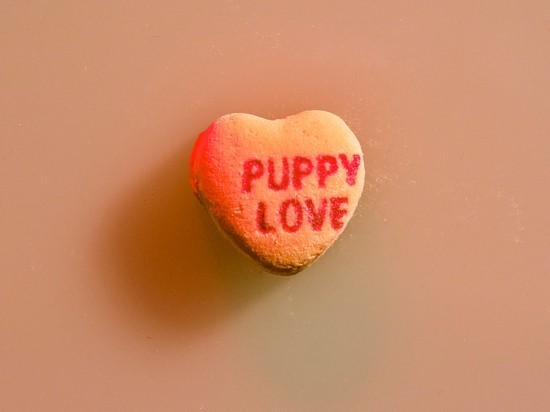Of the many siblings in the seasonal candy family, candy corn is
the quirky breakout star. The jellybean is the reliable one. The candy cane is
perpetually cheerful.
اضافة اعلان
But the conversation heart? It has always been emotional and a
bit needy.
The chalky little treats require annual tending. Months before
each Valentine’s Day, candy companies begin pondering new messages and editing
out the dated ones. (Looking at you, “On Fleek”.) The dozen or so fresh sayings
must be both current and inoffensive, charming, and clever. And they cannot
overshadow classic expressions of romantic love, that were first inscribed in
1902 by the Boston company that had invented the Necco Wafer.
After more than a century of expressing emotion in the
vernacular of the moment — “Call Me” became “Fax Me” became “Page Me” became
“Email Me” became “Text Me” — the candy heart has become something of a
barometer. If former Destiny’s Child singer Michelle Williams can stage her
comeback with a song about candy corn, maybe the nation can gauge the state of
love through its candy hearts.

For 2023, the Spangler Candy Co. — one of two manufacturers that
dominate the conversation-heart market — has chosen an animal theme for its
Sweethearts line. Phrases like “Big Dog”, “Love Birds”, and “Purr Fect” are a
nod to all the people who have acquired pets during the pandemic.
Last year, as the nation was still recovering, the company
introduced 16 supportive slogans like “Youda Best”, “Fear Less”, and “Good
Job”. The idea, the company said, was to give people a lift.
Fans of more passionate slogans may not have been pleased, but
Helen Fisher, a senior research fellow at the Kinsey Institute and the author
of six books on love, intimacy, and the brain, said the less amorous messages
marked a cultural turning point.
“These candy hearts are yet another expression of this huge
societal change since the pandemic,” she said. “It’s this theme of attachment.
Much of the world is going to settle down, and along with that, they’re looking
not only for romantic love but also for deep, long-term attachment.”
Valentine’s Day sweets make up only about 3 percent of candy
sales, and it would be easy to dismiss conversation hearts as mere currency for
grade school crushes. But about 23 percent of households buy nonchocolate
candies for the holiday, including talking hearts. Millennial and Generation X
households with children are the biggest fans of Valentine’s sugar candy,
according to IRI, a global market research firm.
“These candy hearts are yet another expression of this huge societal change since the pandemic.”
The team writing the mottoes for next year’s batch of
Sweethearts has already developed a new theme aimed at that demographic sweet
spot. But before we get to where the conversation is headed, it helps to know
where it has been.
The candy heart was born during the lozenge craze of the
mid-1800s, when apothecaries sold medicated candies to soothe sore throats and
suppress coughs. (Some included morphine and heroin, ingredients that were
later dropped.)
Making lozenges by hand was time-consuming. In 1847, a Boston
pharmacist named Oliver Chase invented a machine that would stamp out medicinal
versions from sugar paste. Since he was working in what was then the country’s
candy-manufacturing center, he shifted gears and founded what would become the
New England Confectionery Co., or Necco.
Almost 20 years later, Chase’s brother began using a felt pad
and red vegetable dye to stamp words onto the candy. The company cut dough into
shapes like kites and baseballs, called them motto lozenges and embossed them
with extended locutions like “How long shall I have to wait? Please be
considerate,” “Mother knows I’m out” and “Married in pink, he will take to
drink.”

The hearts came along in 1902. The basic recipe — about 90
percent sugar, with a little corn syrup and glycerin — has not changed much.
Flavors from the period like clove and sassafras have given way to an ambiguous
array of what might best be called fruit-adjacent flavors, and wintergreen.
For decades, the Necco hearts monopolized the market, until
Brach’s jumped in during the 1950s. That company tried out tropical fruit
flavors and for a limited time sold plastic boats filled with hearts called
Friend Ships. A line of candies called Wisecracks! End the Conversation Hearts,
with slogans like “Nope” and “4 Never,” was introduced in 2021. This year,
Brach’s has hearts with catchphrases from the sitcom “Friends”, like “Moo
Point”.
Brach’s officials have pointed out that their candies are
laser-printed, producing a cleaner look than traditional stamping, which can
result in misshapen hearts and blurred letters. (A member of the Necco
production crew told a writer for The Atlantic in 2013 that because P’s
sometimes emerged looking like F’s, the company had stopped using phrases that
started with P.)
Candy-heart lovers split into camps. “Brach’s may not be able to
take credit for printing salacious messages on candy hearts, but at least they
had the decency to offer texture and flavor,” said Mike Pomranz, a food writer
who once argued that Sweethearts were just reshaped Necco Wafers and that
Brach’s softer texture made theirs superior.

By 2019, Brach’s hearts were bigger sellers than the originals.
The brand now commands 60 percent of the market for conversation hearts, which
are the bestselling Valentine’s Day candy, said Katie Duffy, the vice president
and general manager of seasonal candy at the Ferrara Candy Co., which owns
Brach’s.
But even Brach’s loyalists bow down to the history contained in
more than a century of sayings, which over time became limited to the nine
letters that fit on a tiny heart — fewer if they use a W.
For decades, the task of editing Necco’s 80 to 125 sayings each
year fell to candy executive Walter Marshall. He solicited suggestions and drew
inspiration from the world around him, using more intuition than market
research to pick the winners. He liked “You Go Girl,” which his granddaughter
heard on Rosie O’Donnell’s talk show. He accepted “Awesome” but rejected “Phat”.
For a few years after Marshall retired in 2000, the company
picked themes that were less about love and more about, well, anything. In
2003, it pursued an education angle, with “Let’s Read” and “Wise Up”. In 2005,
a banner year for New England’s professional sports teams, messages included
“Be a Sport” and “Cheer Me On”. Even the weather had its moment, in 2008, with
“Heat Wave” and “In a Fog.”

And on it went, some 5 billion little hearts a year, until Necco
filed for bankruptcy in 2018. It sold its Sweethearts, Necco Wafers and Canada
Mints brands for nearly $19 million to the family-owned Spangler Candy Co., an
Ohio firm that also churns out Dum-Dums and orange marshmallow Circus Peanuts.
In a crushing blow to first graders everywhere, there were no
boxes of Sweethearts to exchange in 2019. Spangler, which began making the
hearts in Mexico, couldn’t get the equipment ready in time. But the hearts were
back the following year, and the new owners wrote their first set of messages.
They went with the classics: “QT Pie,” “Sweet Talk”, and “UR Mine.”.
Then came 2021, the year of pep talk, and this year, with its
“Paw Some” pet messages.
Which brings us to plans for 2024. Spangler has hired Tombras,
the ad agency, to create Sweethearts’ first TikTok and Instagram accounts and
help write new sayings.
The company won’t reveal them yet, but there is a theme. Despite
Spangler’s newfound digital push, 2024 will be all about IRL, said Reise Kitts,
who manages the account for Tombras.
“Anyone can go online and give likes out like candy,” he said.
“Why not give candy out to show someone you like them for real?”
Read more Lifestyle
Jordan News









